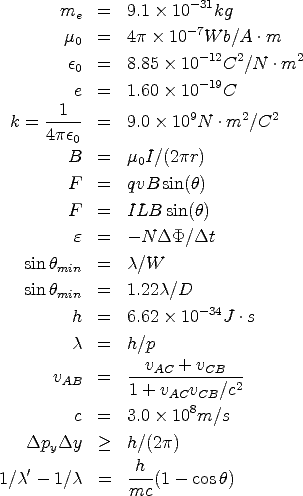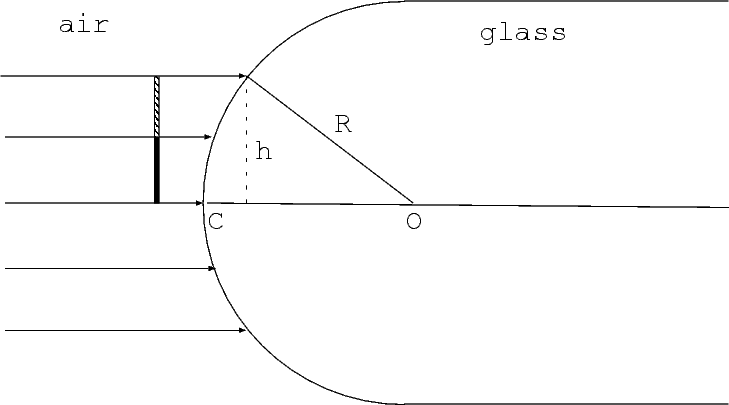
You have 2 hour 15 minutes to answer 9 questions on this exam. Work each problem only on the sheet provided for this problem, using the back if necessary. Please write the name and recitation section on each sheet at the top of the page.
You must indicate the reasoning and show all the steps.
If you are unable to obtain the answer to part of a problem and you need the answer to solve the subsequent parts, use an appropriate symbol for the answer to the previous part and solve in terms of that symbol.
Some useful constants and formulas are given here:

1. (5 points) Explain the fact that you see yourself upside down when you look at the front side of a shiny teaspoon held at arm’s length. Draw a ray diagram to support your reasoning.
2. (10 points) The eye of human being can not resolve the headlights of a car far away. Why? Estimate the distance at which one can hope to distinguish the headlights of a car. The pupil of your eye has a diameter of 2mm. The visible light has a wavelength of about 500nm.
3. (5 points) A cruiser approaches an alien spacecraft in a speed close to that of light c and fires an ion gun at the alien spacecraft. The ion leaves the cruiser at a speed of close to c observed by the fighter aboard the cruiser. However, the alien finds that the ion only moves away from the cruiser very slowly. Explain.
4. (5 points) The wave-particle duality is now accepted as an essential part of nature. Please give two experiments where the electron demonstrates its wave and particle characteristics respectively.
5. (20 points) A piece of glass, of index of refraction n = 1.5, has one surface polished into a sphere of radius 5cm, as shown. The normal to a sphere is always along a radius. Rays of light strike the glass from the left, as shown.

6. (10 points) In an experiment, a glass plate (nglass = 1.5) lies under a film of soap (nsoap = 1.33). Visible light is incident almost normal to the plate. Maxima of reflected light are observed at 406nm and 609nm. What is the thinnest that the film can be?
7. (15 points) Electrons are moving with a velocity 5 × 106m/s. These electrons are used to
perform the Young’s double slit experiment where the separation between the two slits is
d = 0.1 m and the detector is placed at a distance of L = 5m behind the slits.
m and the detector is placed at a distance of L = 5m behind the slits.
8. (15 points) A person runs 100m in 10s in a train along a straight line in the same direction as the train moves. The train moves at a velocity 0.8c relative to the ground. c is the speed of light.
9. (15 points) In the Bohr’s Hydrogen atom model, the energy levels are given by: En = (-13.6ev)/n2 where n = 1, 2, 3,....
 ke2/a.
ke2/a.